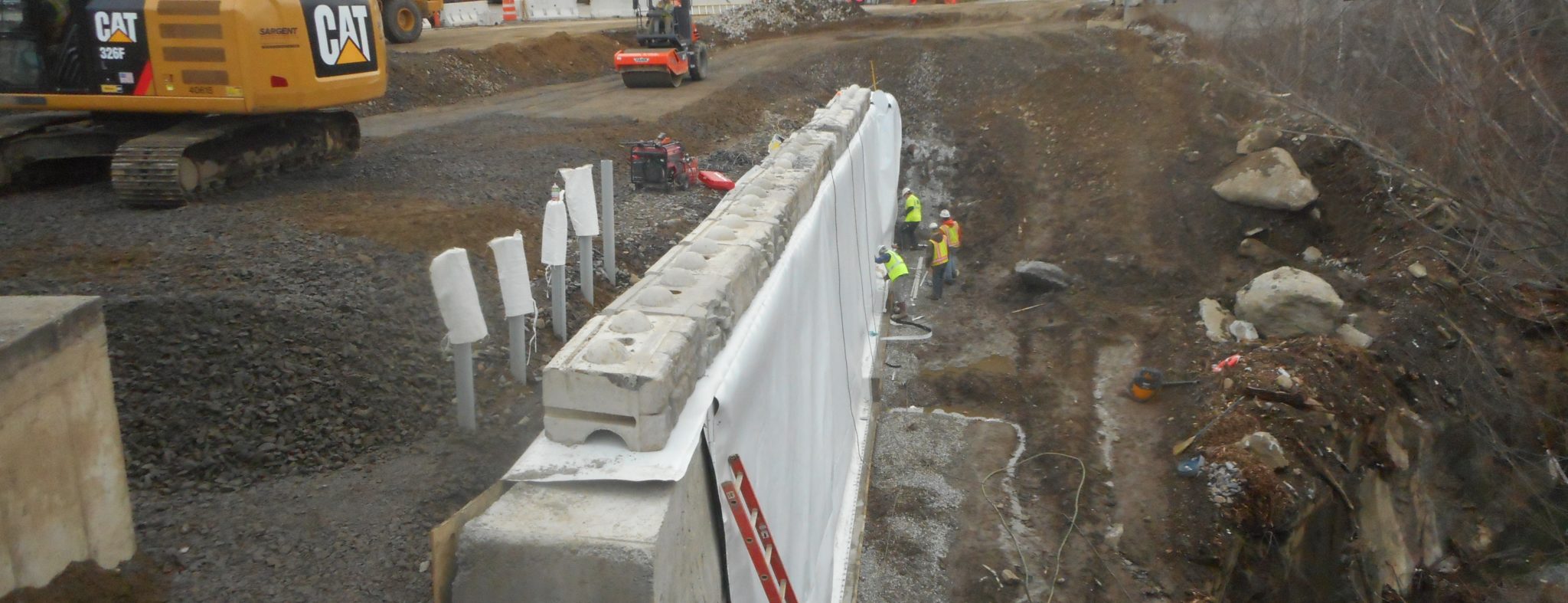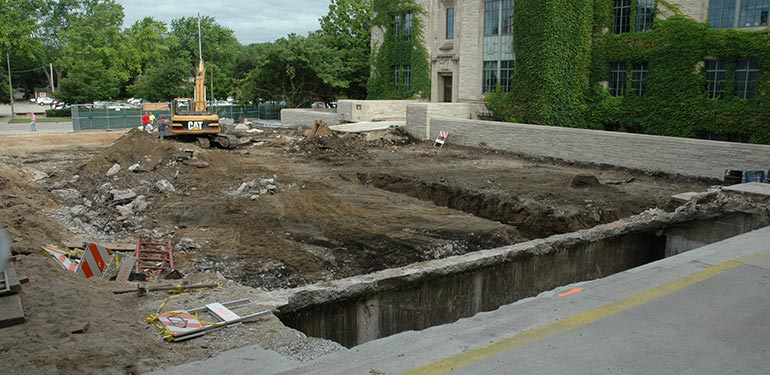Why the Geotechnical Industry Needs Innovative Solutions Currently
Why the Geotechnical Industry Needs Innovative Solutions Currently
Blog Article
The Essential Contributions of Geotechnical Engineers in Examining Dirt Actions and Structure Design for Sustainable Infrastructure Advancement
Geotechnical engineers offer as a foundation in the realm of lasting facilities development, where their expertise in analyzing soil behavior straight influences the safety and durability of structures. By using sophisticated techniques such as Conventional Infiltration Tests and Cone Infiltration Testing, they carefully examine soil properties, leading to educated decisions on structure design.
Duty of Geotechnical Engineers

In addition to website investigations, geotechnical designers assess potential threats such as soil liquefaction, incline stability, and groundwater concerns. They apply advanced design principles to establish solutions that minimize these dangers, ensuring that styles follow appropriate codes and standards. Their job frequently entails partnership with various other engineering techniques, architects, and ecological scientists to produce incorporated methods to infrastructure growth.
Additionally, geotechnical designers add to lasting practices by advertising using materials and techniques that reduce ecological impact. With their comprehensive understanding of soil technicians and geology, they play a vital function in cultivating safe, durable, and lasting infrastructure that satisfies the requirements of culture while protecting the atmosphere.
Dirt Actions Assessment Techniques
Comprehending dirt actions is fundamental to notified decision-making in geotechnical design, as it straight affects the layout and construction processes. Different analysis strategies are employed to assess soil residential or commercial properties, making sure precise forecasts of its efficiency under various loading problems.
One key method is the Basic Penetration Test (SPT), which gives understandings into soil density and uniformity via the resistance encountered during penetration. Cone Infiltration Screening (CPT) uses a continuous account of dirt stratification and in-situ stamina specifications, allowing a more detailed understanding of subsurface problems.
Research laboratory examinations, such as Atterberg limitations, unconfined compressive stamina, and triaxial tests, are essential for characterizing dirt habits under controlled problems. These examinations help with the determination of crucial parameters, consisting of shear compressibility, stamina, and permeability.

Foundation Design Principles
Foundation layout concepts are critical for ensuring the security and long life of frameworks, as they dictate exactly how loads are transmitted from the superstructure to the underlying dirt. These concepts include different considerations, including load-bearing ability, negotiation, and lateral stability. A thorough understanding of dirt technicians is necessary for geotechnical engineers to assess the communication in between the structure and the soil.
One key concept is the ideal choice of foundation type, which may include superficial foundations, such as spread grounds, or deep structures, like caissons or heaps, relying on soil problems and structural loads click over here - geotechnical eng. The structure needs to be developed to minimize differential negotiation, which can lead to architectural damage

Lasting Framework Practices
Just how can we successfully incorporate sustainability into facilities practices? To achieve this, it is vital to adopt a holistic approach that stresses the partnership between geotechnical engineering and environmental stewardship. Lasting facilities methods begin with comprehensive website evaluations, which assess soil actions, neighborhood environments, and resource availability. By recognizing these aspects, engineers can develop layouts that lessen environmental influence while enhancing material usage.
Additionally, employing cutting-edge building techniques, such as utilizing low-impact structures and recycled materials, dramatically decreases the carbon impact of facilities tasks. Geotechnical engineers play an essential role in choosing appropriate materials that boost toughness and sustainability, such as using geo-synthetics to enhance soil stability and lower erosion.
In enhancement, lasting framework techniques call for ongoing monitoring and maintenance to ensure that structures remain resilient over time. Ultimately, these practices not just add to the long life of frameworks however likewise promote a healthier environment, aligning infrastructure development with broader sustainability purposes.
Study and Applications
Instance research studies in geotechnical engineering offer important insights into the sensible applications of dirt habits and sustainable infrastructure practices. One notable instance is the building and construction of the Burj Khalifa in Dubai, where considerable dirt screening and analysis were conducted to evaluate the one-of-a-kind obstacles postured by the area's loose sand and high water table. Geotechnical engineers employed progressed strategies such as dynamic probing and cone infiltration screening to identify the soil's load-bearing capacity, inevitably causing the style of a deep foundation system that supports this iconic framework.
An additional essential instance is the remediation of the San Francisco-Oakland Bay Bridge after the 1989 Loma Prieta Click Here quake. Geotechnical analyses revealed the demand for dirt stabilization methods, including grouting and dirt nailing, to improve the seismic durability of the foundation. These treatments not only boosted the bridge's safety but likewise contributed to its longevity and sustainability.
Such study exhibit how geotechnical designers play an essential function in understanding dirt behavior and applying ingenious solutions to guarantee the architectural integrity and sustainability of facilities tasks. geo tech engineering. Their competence is essential in dealing with the facility challenges positioned by numerous dirt conditions across varied geographical locations
Conclusion
Finally, the payments of geotechnical designers are vital for the evaluation of dirt actions and the design of foundations, which are necessary for lasting framework development. With the application of sophisticated screening strategies and innovative materials, these experts guarantee the stability and security of frameworks while decreasing ecological impacts. The assimilation of lasting practices advertises resilience in facilities tasks, highlighting the relevance of cooperation among stakeholders to attain effective construction remedies that fulfill both social and ecological demands.
Geotechnical designers serve as a foundation in the realm of sustainable infrastructure development, where their knowledge in evaluating soil behavior directly affects the safety and security and long you can try this out life of frameworks.Geotechnical engineers play an important function in the design and construction of framework by assessing dirt and rock habits to ensure stability and safety and security. A thorough understanding of dirt auto mechanics is vital for geotechnical engineers to review the communication between the foundation and the dirt.
Geotechnical analyses exposed the need for dirt stabilization strategies, consisting of grouting and soil nailing, to boost the seismic durability of the foundation.In verdict, the contributions of geotechnical designers are crucial for the assessment of dirt behavior and the layout of foundations, which are essential for lasting infrastructure development.
Report this page